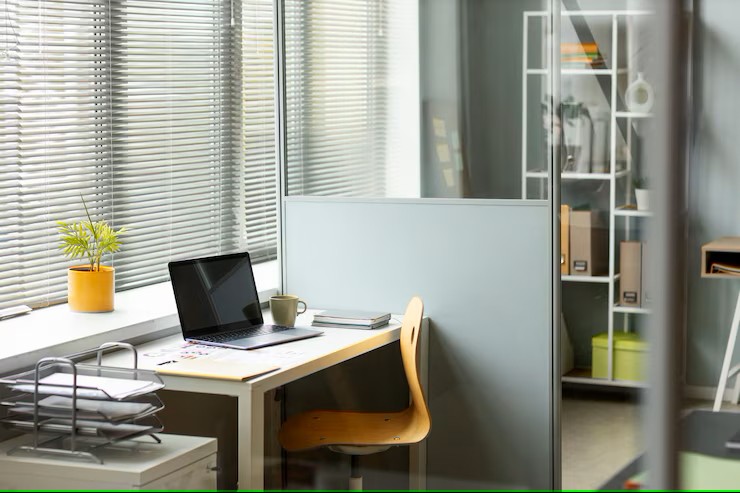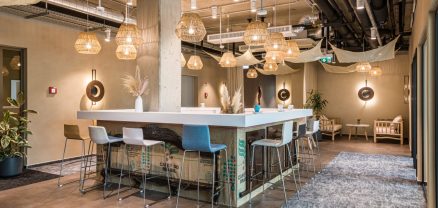Transforming Small Spaces into Functional Serviced Offices
Creating functional serviced offices out of small spaces is both a challenge and an opportunity. With businesses increasingly seeking flexible, cost-effective work environments, optimizing compact areas has become a vital aspect of office design. Even the smallest space can be transformed into a high-performing, appealing workplace with the right strategies. By focusing on smart layout design, multifunctional furniture, and thoughtful technology integration, you can bring both efficiency and comfort to smaller offices.
The Importance of Smart Layout Design
The foundation of any functional office, regardless of size, is an efficient layout. When space is limited, every square foot counts. A well-planned layout ensures that the office not only looks organized but also supports productivity and smooth workflows.
Start by identifying the primary needs of the space. Are you accommodating a team of remote workers, hosting client meetings, or providing a collaborative hub? Defining the purpose will help prioritize which elements require the most room. For instance, an office primarily used for solo workstations may benefit from strategically placed desks with privacy dividers, while a client-facing space might prioritize a welcoming reception area.
Consider the flow of movement throughout the area. Congested pathways can make the environment feel cramped and inhibit functionality. Open layouts and flexible desk arrangements can help to prevent this issue. If the space allows, leveraging verticality by incorporating tall shelving units or wall-mounted storage is also a practical way to free up floor space and maintain order.
The Role of Multifunctional Furniture
Multifunctional furniture is a game-changer when designing small serviced offices. Pieces that serve multiple purposes maximize the utility of every corner while helping to maintain a clean, uncluttered look.
Foldable desks or meeting tables, for example, can turn a single conference room into a workspace by simply adjusting the furniture. Convertible seating such as modular sofas can provide seating options during informal meetings and transform into additional desks or collaborative space when needed.
Another excellent solution for smaller offices is built-in furniture. Custom desks, wall-mounted seating, or pull-out workstations can seamlessly blend into the overall design while consuming minimal physical space. Clever storage solutions like ottomans with hidden compartments or desks with built-in filing cabinets further enhance functionality without sacrificing aesthetics.
Selecting durable, lightweight materials for furniture ensures easy reconfiguration as needs evolve. Additionally, choosing furniture in neutral tones or glass finishes can help the office look airy and larger than it actually is.
Creating an Inviting Atmosphere in Tight Spaces
Functionality doesn’t have to come at the cost of appeal. Even the smallest serviced office can feel welcoming and enjoyable to work in with the right design touches.
Lighting is a key component. Maximize the use of natural light where possible by positioning desks near windows. When natural light falls short, use bright LED fixtures to illuminate the workspace evenly. Avoid bulky, overhead lights, and instead incorporate floor lamps or wall-mounted fixtures to save space.
Color choice also plays a role in creating the illusion of a larger environment. Lighter shades of paint, such as whites, creams, or soft pastels, can make the office feel more open and airy. Meanwhile, mirrors can reflect light and visually extend the room’s dimensions.
Adding green elements like indoor plants not only improves air quality but also creates a calming, refreshing vibe. Choose smaller, low-maintenance plants such as succulents or hanging greenery to enhance aesthetics without taking up valuable room.
Personalization can also work wonders. Small design accents, from tasteful artwork to branded decor, help enhance the space’s character. When clients or employees feel at home in a well-thought-out environment, their mood and productivity are likely to increase.
Small Spaces, Big Potential
Transforming small spaces into functional serviced offices may seem daunting at first, but it’s an opportunity to innovate and think creatively. By combining intelligent layout design, versatile furniture, and smart technology, even the most confined offices can be made productive and enjoyable.
With businesses increasingly attracted to flexible, efficient workspaces, optimized small offices are both practical and highly marketable. Not only do they meet the immediate needs of tenants, but they also reflect the office provider’s commitment to modern, thoughtful design. Whether it’s maximizing vertical space, choosing multifunctional furniture, or leveraging tech tools, small serviced offices prove that size is no limit to success.

Do not hesitate to contact us
Get in touch, if you have any question


